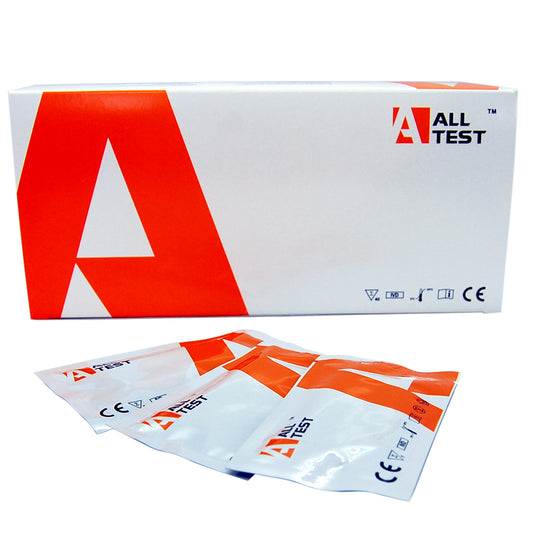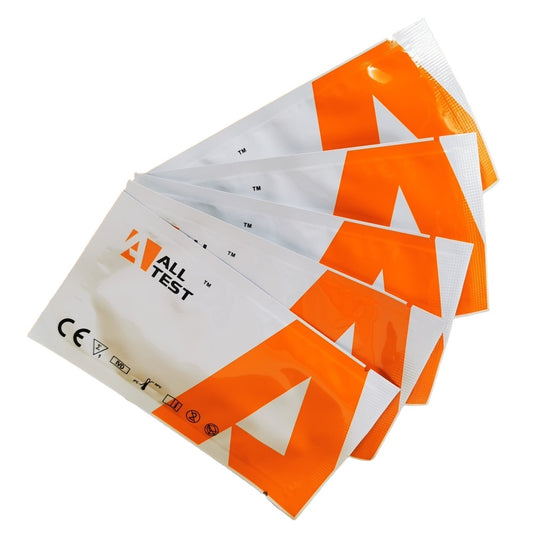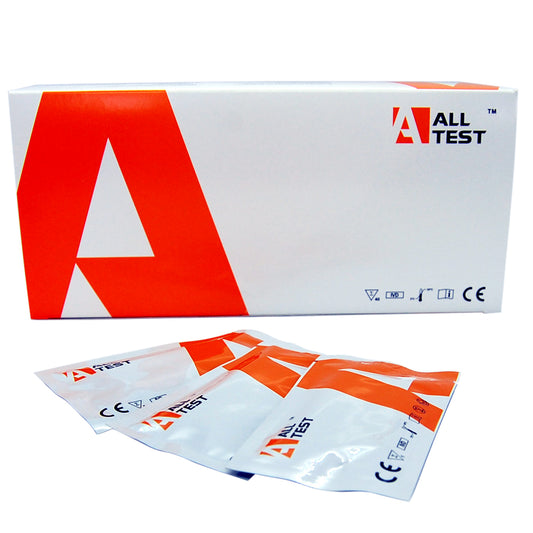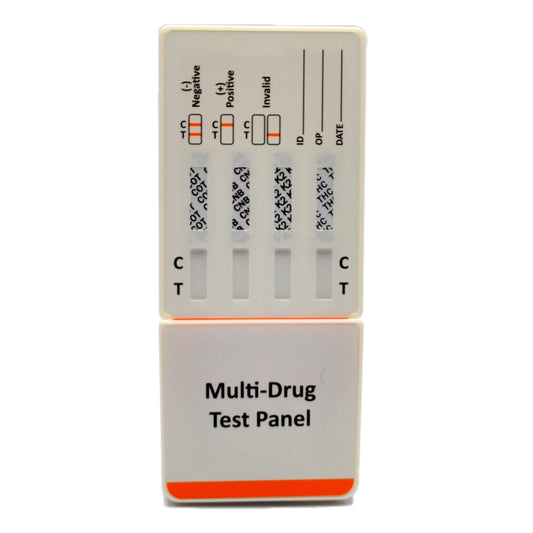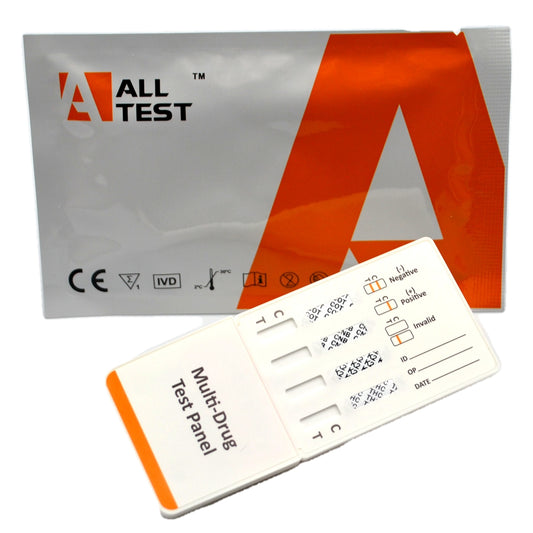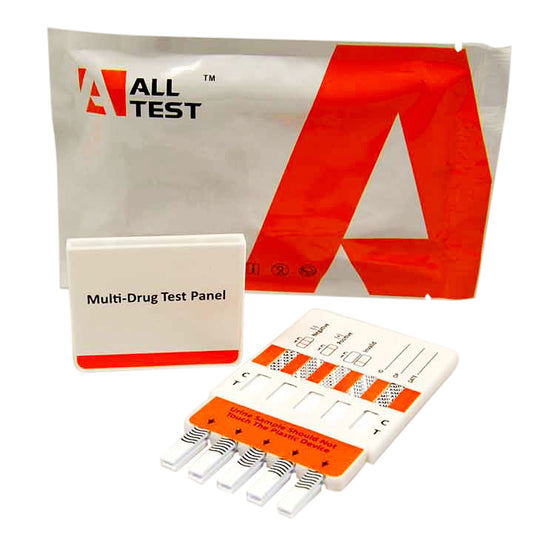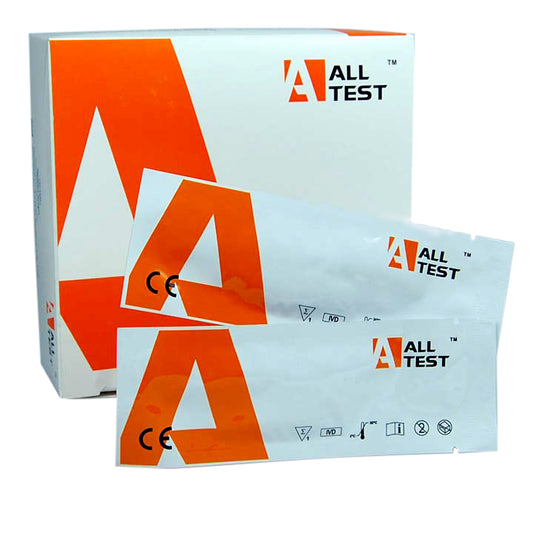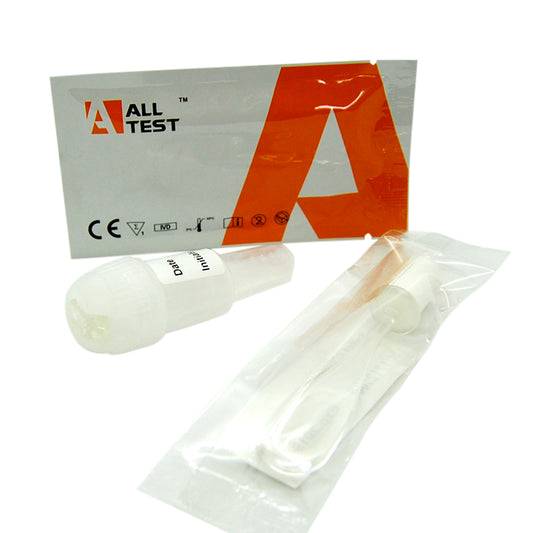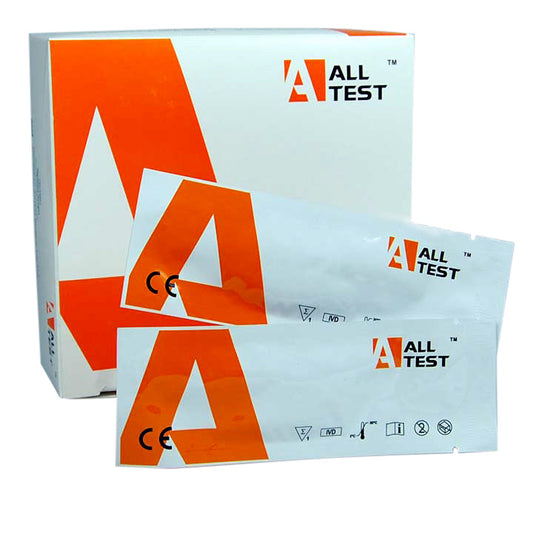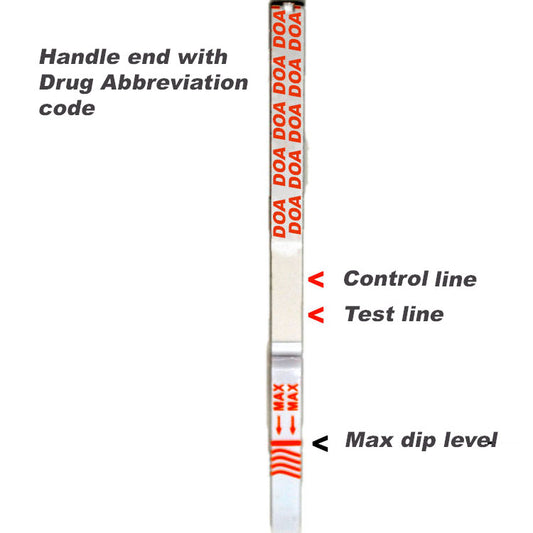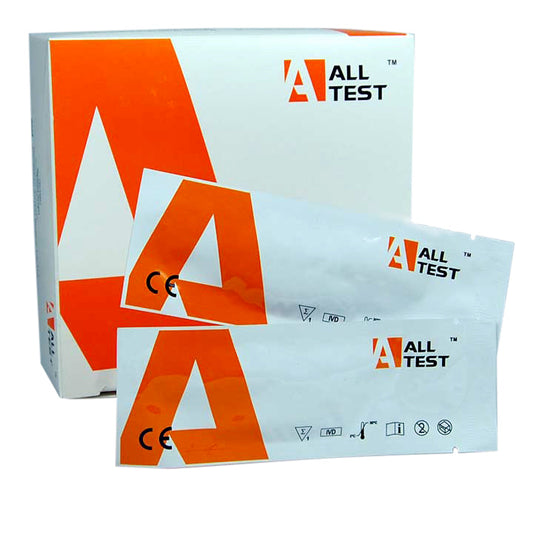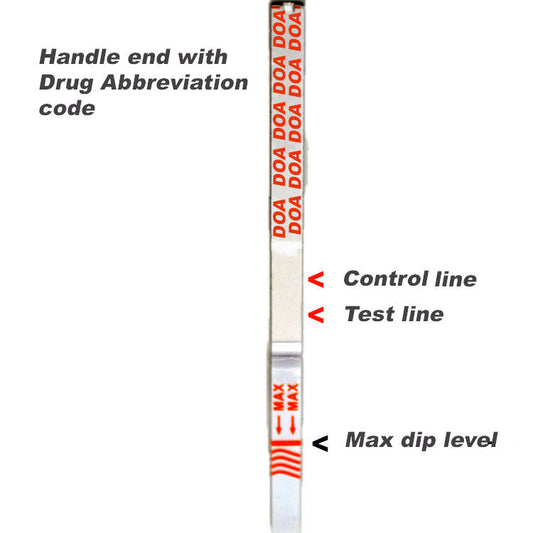Nicotine drug test kit
Low prices, bulk discounts available & discreet next day UK delivery.
These urine, saliva and hair test kits screen for cotinine, the first metabolite of nicotine, and are used for zero tolerance screening of nicotine use, vaping and smoking detection. Smoking test kits are used in insurance health care screening. Cotinine can be detected in urine for up to several days after tobacco use.
What is a nicotine urine test?
A nicotine urine test is a diagnostic tool used to detect the presence of nicotine metabolites in the urine. This test is commonly used for various purposes, including medical evaluations, insurance screenings, and employment checks.
What is Cotinine?
Cotinine is the major metabolite of nicotine. Since cotinine has a longer half-life than nicotine it is a more reliable indicator of tobacco use or nicotine exposure over a longer period.
How the test for nicotine is conducted
Most nicotine tests are conducted using a rapid test kit for urine or less frequently saliva. Our cotinine test kits are all rapid tests designed to give onsite results within 10 minutes. Rapid tests are widely used for detecting cotinine, a major metabolite of nicotine, in urine and saliva. These test kits are popular because they are convenient, accurate and and provide quick results.
Rapid cotinine test kits
Types of rapid cotinine test kits
- Urine Cotinine Test Kits: These test kits detect cotinine in urine, which is the most common type of Nicotine test used due to the longer detection window and ease of sample collection.
- Saliva Cotinine Test Kits: These kits detect cotinine in saliva, offering a less invasive option and the ability to directly observe the sample collection. The detection window is shorter than urine.
How do the cotinine test kits work?
Most rapid cotinine test kits use lateral flow immunoassay technology. This method utilises antibodies that bind specifically to cotinine. The test typically takes a few minutes to produce results, making it convenient for on-the-spot testing. This makes them effective for distinguishing between non-users and users of nicotine.
How accurate are urine nicotine tests?
Urine nicotine tests are generally very accurate for detecting recent nicotine use. Modern urine nicotine tests are designed to be sensitive and specific, meaning they can accurately detect even low levels of nicotine and cotinine. The tests use cut-off levels to determine whether nicotine or cotinine levels are above a certain threshold, indicating recent use. These cut-off levels are set to minimise false positives from passive exposure (secondhand smoke or vape) while ensuring that active nicotine users are identified.
Accuracy of the tests can be influenced by various factors such as the timing of nicotine use relative to the test, the individual's metabolism, hydration status (which can particularly affect urine concentration), and the quality and sensitivity of the Cotinine testing kit used.
Accuracy for rapid cotinine tests compared to GCMS lab tests
- Urine test kit 99.8% accuracy
- Saliva test kit 98.7% accuracy
Common uses of rapid cotinine test kits
- Employment screening: Employers may use these tests to enforce no-smoking policies or assess smoking status for insurance purposes.
- Smoking cessation programs: Healthcare providers use these kits to monitor individuals' progress in quitting smoking.
- Insurance evaluations: Insurers might require these tests to determine risk and set premiums accordingly.
- Personal use: Individuals may use these kits to self-monitor nicotine use or exposure.
- Research: Researchers may use rapid cotinine tests in studies related to smoking behaviors and exposure to secondhand smoke.
- Parents or schools: Monitoring teenagers use of nicotine products including cigarettes and vapes containing nicotine.
- Before surgery: a Cotinine test may be performed before surgery. as smoking increases the risk of complications following surgery.
Which is better urine or saliva cotinine test kits
Urine Cotinine Test Kits
- Detection window: Cotinine can be detected in urine for 2-4 days after nicotine exposure. Chronic heavy users of Nicotine products may show positive results for longer.
- Sample collection: Requires a urine sample, which some may find inconvenient or invasive compared to saliva collection.
- Usage: Widely used due to high accuracy, low cost per test the ease of sample collection and processing.
Saliva Cotinine Test Kits
- Detection window: Cotinine can be detected in saliva for 1-2 days after nicotine use. The detection window is shorter than for urine.
- Sample collection: Non-invasive and can be done easily and discreetly.
- Usage: May be more convenient if no toilet facilities available and less invasive nature, suitable for situations where urine collection is impractical. Not as reliable at detection as urine testing.
Can the cotinine tests detect the amount of nicotine used?
Rapid cotinine tests, commonly used for quick screening purposes in urine, saliva, are designed to detect the presence of cotinine rather than to precisely quantify the amount of nicotine used. They provide a simple positive or negative result based on a predefined cut-off level of cotinine for the test kit being used. This indicates whether cotinine is present above a certain threshold, suggesting recent nicotine use.
Rapid tests are effective at determining whether an individual has been exposed to nicotine recently, distinguishing between users and non-users. Rapid cotinine tests are more about identifying the presence of cotinine rather than giving an accurate measurement of cotinine levels. They cannot provide a detailed analysis of the exact amount of nicotine consumed, for this a laboratory Cotinine test would be required.
Can second hand smoke show up on a nicotine test?
Cotinine tests typically have higher cut-off levels to reduce false positives from incidental exposure like secondhand smoke, although if the exposure to secondhand smoke is very high this may be sometimes be picked up by the tests.
Does vaping show up on a Cotinine test?
Yes, vaping Nicotine products can show up on a cotinine test. Cotinine is a metabolite of nicotine, and vaping delivers nicotine to the body similarly to traditional tobacco products like cigarettes.
Cotinine levels from vaping can sometimes be lower than those from smoking traditional cigarettes, especially if the vaping device and e-liquid contain lower concentrations of nicotine. However, regular and intensive vaping can still result in significant cotinine levels that are detectable on tests. The concentration of nicotine in the e-liquid used for vaping influences cotinine levels. Higher nicotine concentrations lead to higher cotinine levels in the body.
What is the cut off level for cotinine test?
The cut-off level for cotinine tests varies depending on the testing method, the biological sample used (urine, blood, saliva, or hair), and the context of the test (e.g., medical diagnostics, employment screening, or insurance evaluation). The cut-off level is the threshold above which the test result is considered positive, indicating exposure to nicotine.
We have a range of sensitivities available:
- ALLTEST Cotinine COT 100ng Ultra Sensitive Urine Drug Test Strips
- ALLTEST Cotinine COT 20ng/ml Saliva Drug Testing Kit DCT-802
Why is a Cotinine test done before surgery?
A cotinine test is often conducted before surgery for several important reasons related to the patient's health and safety, as well as the effectiveness of medical treatment:
- Anesthesia management: Nicotine, whether from smoking or vaping, can affect how anesthesia drugs work during surgery. Nicotine constricts blood vessels and reduces blood flow, which can impact the delivery of oxygen and nutrients to tissues during and after surgery. Anesthesiologists need accurate information about nicotine exposure to adjust anesthesia dosages appropriately and manage potential complications.
- Postoperative complications: Nicotine use is associated with increased risks of postoperative complications such as delayed wound healing, infections, and cardiovascular issues. Knowing a patient's nicotine status allows healthcare providers to take preventive measures and plan for appropriate postoperative care.
- Cardiovascular risks: Nicotine use, particularly smoking, is linked to cardiovascular diseases. Surgery itself imposes stress on the cardiovascular system, and nicotine can exacerbate these risks. Understanding nicotine exposure helps in assessing and managing cardiovascular risks before, during, and after surgery.
- Optimising treatment plans: Healthcare providers may use cotinine tests to encourage smoking cessation before surgery, as quitting smoking can significantly reduce surgical risks and improve recovery outcomes. Knowing a patient's nicotine status allows for personalised counseling and support to help them quit smoking.
- Hospital policies and protocols: Many hospitals and surgical centres particularly in the USA have policies in place that require nicotine testing as part of preoperative assessments. This ensures compliance with institutional guidelines aimed at enhancing patient safety and optimising surgical outcomes.
In essence, a cotinine test before surgery provides crucial information that helps healthcare providers mitigate risks, tailor treatment plans, and improve overall surgical outcomes by addressing the potential impacts of nicotine use on anaesthesia, wound healing, and cardiovascular health.
Do UK hospitals do a cotinine test before surgery?
Yes, hospitals in the United Kingdom (UK), like in many other countries, may conduct cotinine tests before surgery for various reasons related to patient safety and surgical outcomes. The decision to perform cotinine testing before surgery can depend on hospital policies, the surgeon conducting the procedure, surgical procedures, and the individual patient's medical history.
Surgeons or anaesthetists are most likely to perform cotinine tests before surgery in cases where nicotine use can significantly impact surgical outcomes and patient safety. Some hospitals have policies that require cotinine testing as part of preoperative assessments for certain types of surgeries, regardless of individual patient risk factors. Stopping smoking or vaping prior to elective surgery is always advisable.
Examples of elective surgeries where a Cotinine test and stopping smoking may be particularly helpful
- Orthopedic Surgeries: Such as joint replacements (e.g., knee or hip replacements), where wound healing and infection risks are critical factors influenced by nicotine use.
- Plastic and Reconstructive Surgeries: Procedures like breast reconstruction or cosmetic surgeries where optimal wound healing and tissue recovery are essential.
- Elective Cardiovascular Surgeries: Nicotine's impact on cardiovascular health makes it important to assess and manage risks before procedures like coronary artery bypass grafting (CABG) or valve surgeries.
Summary
Rapid cotinine test kits for urine and saliva are practical tools for quickly assessing nicotine exposure. They are especially useful in settings where immediate results are needed and provide a balance between convenience and accuracy. While they may not replace more precise laboratory tests, their ease of use and quick turnaround make them valuable for a variety of applications.
Further considerations regarding Cotinine testing and test results
- Always read the instructions carefully: Proper usage and interpretation of the test kit and interpretation of the results are crucial for accurate results.
- Confirm positive results: It's advisable to confirm positive results with a more specific laboratory test, especially in critical situations like employment or insurance screenings.
- Consider the context: Be aware of potential sources of cotinine, such as secondhand smoke or nicotine replacement therapies such as Nicotine patches or gum, when interpreting results.
These test kits are an essential tool in many settings and continue to evolve with advances in testing technology.
What is a cotinine surface test?
A cotinine surface test kit refers to a method used to detect and measure cotinine residue on surfaces rather than in biological samples like urine, blood, saliva, or hair. Surface testing typically involves swabbing or wiping specific areas where nicotine residue may accumulate, such as walls and furniture. This type of test is primarily used in environments where exposure to tobacco smoke or nicotine residue is a concern, such as:
- Public spaces: Including hotels, rental cars, and workplaces where smoking is prohibited but where residual nicotine from past smoking can linger on surfaces.
- Residential settings: Especially in homes of smokers or places where secondhand smoke exposure may be a concern, such as in apartments or shared living spaces.
- Occupational health and safety: To ensure compliance with workplace smoking policies and to assess potential health risks related to exposure to nicotine residues.
- In the home: parents may wish to check children and teenagers rooms if they suspect they are smoking or vaping.

